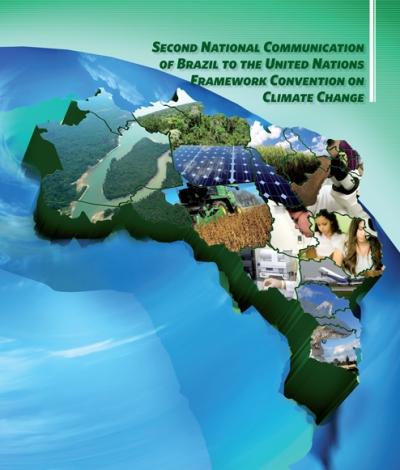The rain forest in Brazil is a unique ecosystem that is particularly threatened by the impacts of climate change. In the worst case scenario, huge parts of the Amazon River basin could transform into a savannah. This would have dramatic consequences both for the worldwide climate, as well as the local population whose livelihood depends on the rain forest. Like many other Latin American countries, Brazil has not fully confronted what is entailed in adapting to climate change. However, this is gradually changing. For instance, the Brazilian climate change plan published in December 2008 covers adaptation. Based on more accurate regional climate models that are expected to be published in 2009, the government intends to prepare detailed adaptation measures.
Climate change will affect Brazil in multiple ways. The consequences of global warming can already be observed today. During the past decades, patterns of precipitation have changed significantly and temperatures have risen by 0.5°C.
The Amazon region is especially vulnerable to climate change. The Amazon is the largest rainforest in the world and represents 40 percent of all remaining rainforest on the planet. About 65 percent of the Amazon region is located in Brazil. The remainder is distributed across eight additional countries. The Amazon region is crucial for both the global and the local climate. Through evaporation, the rainforest absorb massive amounts of heat and is an important source of fresh water. About half of all rainfall in the Amazon region is caused by local evaporation. Furthermore, the most important export-oriented agricultural regions of Brazil are dependent on the Amazon water cycle, and given its role as a huge CO2 sink, the Amazon region serves a key function in the global climate systems.
It has long been known that massive clear-cutting operations represent a serious threat to the Amazon rainforest. The fact that the tropical rainforest is also threatened by the impacts of climate change is less known. Temperatures and rainfall amounts are expected to become more volatile in the future. Furthermore, a global average temperature increase of 2°C could result in a local temperature rise of up to 4°C. This problem, and the rising frequency of extreme weather events, could overburden the natural adaptive capacity of the rainforest, leading parts of the rainforest to be transformed into savannahs.
The country profile above was found in the Meister Consultants Group study: Floating Houses and Mosquito Nets: Emerging Climate Change Adaptation Strategies Around the World.
Source: Dr. Hans-Peter Meister, I. K., Martina Richwein, Wilson Rickerson, Chad Laurent. Additional contributors: Jeff Snell, Elisa Burchert, Florian Lux. (2009).Floating Houses and Mosquito Nets: Emerging Climate Change Adaptation Strategies Around the World. Boston: Meister Consultants Group. p. 76-79.
For more detailed information and references refer to Floating Houses - Full Report.
To date, Brazil has submitted one National Communication to the United Nations Framework Convention on Climate Change (UNFCCC) in December 2004. The Communication established the First National GHG Inventory for the period 1990-1994 including the agricultural sector and land-use change and forestry. It also gives a description of the programs and policies currently active in the country containing a climate change component. Finally, it contains a part on the integration of the climate change issue in future medium term and long term planning, in terms of environmental legislation, measures against deforestation and research programs on climate change topics. A Second National Communication is in the works and will include a renewed National GHG Inventory with 2000 as its base year.
The Ministry of Environment (MMA, Portuguese acronym) through its Climate Change Unit (DEMC, Portuguese acronym) is responsible for the development of policies and strategies for mitigation of GHG emissions and for adaptation to climate change effects. It also is in charge of coordinating the Executive Group for Climate Change (GEx, Portuguese acronym) responsible for the elaboration and implementation of the National Climate Change Program.
Brazil has initiated a number of vulnerability studies and assessments and a climate change plan is under preparation to design local responses to climate change, including adaptation measures by sector. The following two vulnerability studies have been completed: i) coastal ecosystems in the state of Rio de Janeiro and ii) impact on the Atlantic Rainforest (Mata Atlantica) biome.
Source: World Bank Country Notes on Climate Change Aspects in Agriculture. Accessed on: 24 May 2010 at http://web.worldbank.org/WBSITE/EXTERNAL/COUNTRIES/LACEXT/0,,contentMDK:22077094~pagePK:146736~piPK:146830~theSitePK:258554,00.html
For additional information and for the complete Brazil - Country Note on Climate Change Aspects in Agriculture refer to the World Bank Country Notes here.
The Country Notes are a useful tool for organizing in a systematic way the available information on climate change and agriculture in each country. They provide a brief summary of information pertinent to both climate change and agriculture in 19 countries in LAC, with focus on policy developments (action plans and programs), institutional make-up, specific adaptation and mitigation strategies, as well as social aspects and insurance mechanisms to address risk in the sector.





